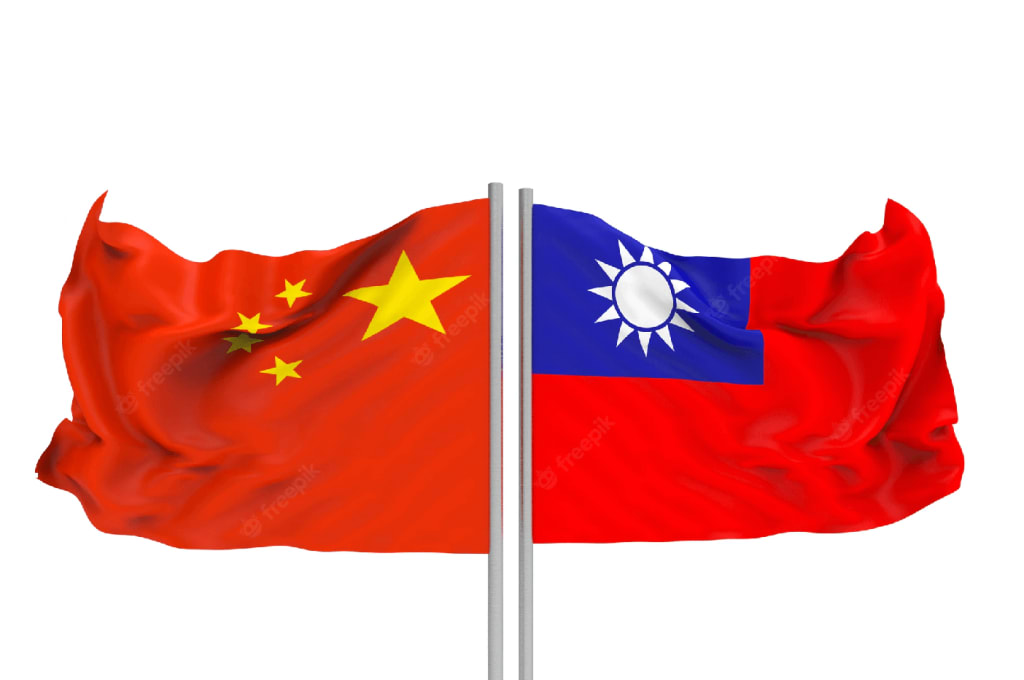Escalating Tensions: Chinese Warship's Unsafe Encounter with US Vessel in Taiwan Strait, as Russia's Actions Fail to Affect China's Taiwan Intentions
The Chinese Luyang III-class guided-missile destroyer made an unsafe maneuver near the USS Chung-Hoon destroyer in the Taiwan Strait, forcing the latter to slow down to avoid a collision, the US Indo-Pacific Command said on Saturday.

In a recent incident, a Chinese warship came dangerously close to colliding with a US vessel in the Taiwan Strait. On June 3, the USS Chung-Hoon (DDG 93) and the HMCS Montreal (FFH 336) were conducting a routine transit when the People's Liberation Army Navy (PLA(N)) LUYANG III DDG 132 (PRC LY 132) executed unsafe maneuvers near the USS Chung-Hoon. The Chinese warship violated maritime rules by getting as close as 150 yards (137 meters), prompting the US vessel to slow down and alter its course to avoid a collision. This incident follows another concerning event in late May when a Chinese J-16 fighter jet performed an unnecessarily aggressive maneuver while intercepting a US RC-135 aircraft over the South China Sea.
Amidst these escalating tensions, the International Institute for Strategic Studies (IISS), a leading strategic think tank, published a report emphasizing that Russia's invasion of Ukraine has not altered China's intentions regarding a potential invasion of Taiwan. Despite the ongoing conflict in Europe, the report argues that China remains the primary long-term challenge to the existing international order. Contrary to the notion that the war in Ukraine might discourage China from engaging in further adventurism, the report suggests that the prolonged conflict could actually accelerate trends toward increased military spending and the development of military capabilities in the Asia-Pacific region.
The report's release precedes the Shangri La Dialogue, a security conference hosted by the IISS, where the intensifying rivalry between the United States and China and its effects on the Asia-Pacific region will be the main focus. However, controversy has already arisen as Beijing declined a request from Washington for a meeting between their defense chiefs.
Analyzing the global impact of the Ukraine conflict, the report argues that there is no concrete evidence to suggest that it has influenced China's thinking regarding the timing or methodology of a potential attack on Taiwan. Beijing perceives Taiwan as an internal challenge, considering a Chinese use of force to be fundamentally different from the war in Ukraine. Nonetheless, Chinese military analysts have examined the effects of Western assistance for Ukraine and Russia's military performance, although predicting China's future actions remains impossible. Beijing's decision-making would be influenced not only by military capability assessments but also by considerations of likely non-military reactions from the US and its allies, including potential economic effects.
While China closely observes Russia's military efforts, learning from Moscow's mistakes, it remains uncertain whether China will eventually use force to annex Taiwan. Earlier this year, the Taiwanese defense ministry expressed that China's military is learning from Russia's invasion of Ukraine, particularly emphasizing the need for swiftness in any potential attack. Russia's blitzkrieg-like military operation against Ukraine was met with a skillful defense, partly due to intelligence assessments provided by the West to Kyiv before the invasion.
In recent years, China's growing assertiveness, demonstrated by the swift expansion of its navy, militarization of islands in the South China Sea, and increased rhetoric over disputed territorial claims, has raised concerns in the United States and the wider region. Taiwan, in particular, has gained attention as a potential security hotspot in Asia, partly due to Russia's actions in Ukraine. China has repeatedly hinted at its intention to occupy Taiwan and integrate it with the Chinese mainland, even if it means resorting to the use of force. Military preparations for a potential invasion have been intensified since August of the previous year, with the Chinese PLA conducting large-scale military drills simulating an armed invasion of Taiwan.
Asia-Pacific leaders remain apprehensive about the lowering threshold for armed confrontation in the region





Comments
There are no comments for this story
Be the first to respond and start the conversation.